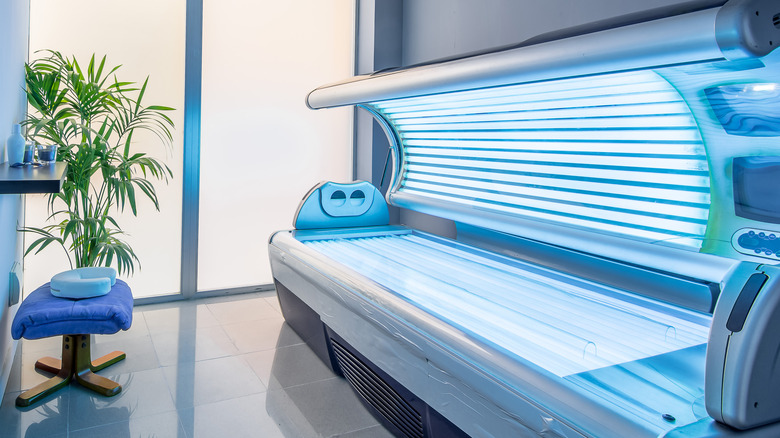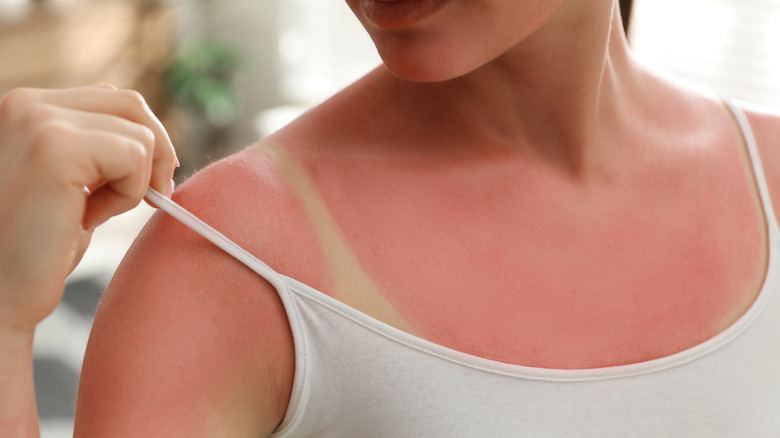Are Indoor Tanning Beds Safer For Your Skin Than The Sun?
While sporting tanned skin might appeal to many, experts at the U.S. Food & Drug Association (FDA) state that it's highly risky and can cause skin damage. But because tanning under direct sunlight lurks the fear of UV absorption and an increased risk of skin cancer, people have resorted to using indoor tanning beds. Unfortunately, experts have found that this technology is no worse than tanning under sun rays. Indoor tanning beds expose the users' skin to UV radiation, which ultimately results in melanoma — the worst skin cancer, per the Cleveland Clinic. Although nowadays, people are becoming more aware of the risks involved, the practice hasn't stopped entirely.
According to the American Academy of Dermatology Association (AAD), even though the numbers are continually dropping, about 7.8 million people in the U.S. still use indoor tanning. Statistics reveal that some people even go for indoor tanning at least 25 times a year. In 2019 alone, around 8.4% of female high school students used indoor tanning to get sun-kissed skin. Unfortunately, both adolescents and adults engage in this practice, but it mostly attracts females, states CDC.
Why is indoor tanning not good for your skin?
The idea of indoor tanning gained popularity primarily because people wanted to get bronze skin without exposing themselves to UV radiation from sunlight, as per The Skin Cancer Foundation. However, indoor tanning beds also release severely harmful UV rays that may put you at equally serious health risks. In fact, indoor tanning beds are responsible for two types of skin cancers: squamous cell carcinoma and basal cell carcinoma (per AAD).
This technique raises the risk of squamous cell carcinoma by 58%. It's a cancer that develops in the inner and middle layers of the skin, according to Mayo Clinic. And while it isn't life-threatening, it is considered aggressive. On the other hand, basal cell carcinoma increases by 24% with indoor tanning, states AAD. It occurs in the outermost layer of the skin and may lead to red patches, bumps, scars, and elevated lesions (via Skin Cancer Foundation). Keep in mind, experts at AAD also state that indoor tanning may cause your skin to age rapidly. Therefore, you may notice more age spots and tan-induced wrinkles. Additionally, indoor tanning may expose your stretch marks and make them more prominent. That's why it's best to ditch indoor tanning and use a self-tanning lotion instead.


